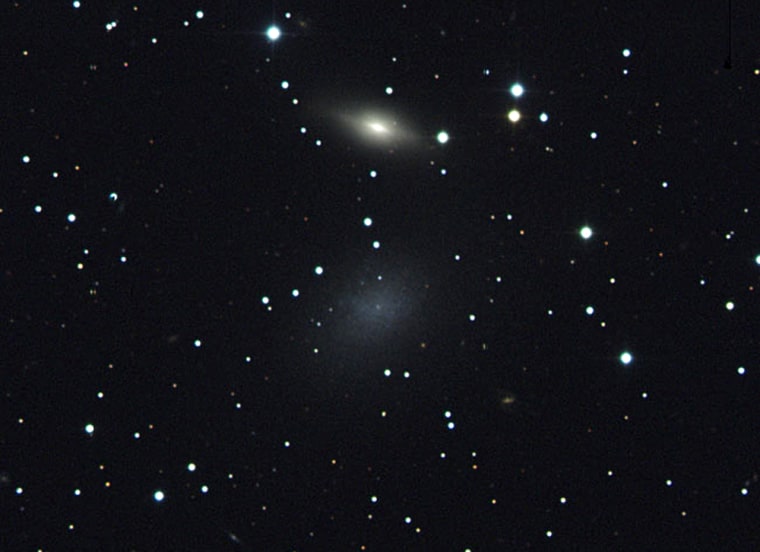Astronomers are rubbing their eyes after discovering that a galaxy assumed to have been a giant for the past 23 years is in fact a dwarf, according to new observations.
NGC 5011C, a galaxy in the vicinity of the Milky Way is located towards the Centaurus constellation, one of the largest constellations of the southern hemisphere. Because of its low density of stars and absence of other features, astronomers would normally classify such a galaxy as a dwarf elliptical — a small faint galaxy with little gas and dust that mainly consists of old stars.
However, for years scientists thought that NGC 5011C was located in the more distant Centaurus cluster — located some 155 million light years away — close to the NGC 5011B galaxy, its bright red companion. So they pinned it as a giant galaxy that was just far away.
Most galaxies — the basic units of the universe which contain stars, gas, dust, and dark matter bound together by one central gravitational force — are found in gravitationally joined binary pairs or in groups. So it was no surprise that the projection of NGC 5011C and NGC 5011B in the sky had astronomers believing that they were cohorts at about the same distance from our own.
But new data obtained with the 3.6-m ESO telescope, revealed that the two galaxies have very different red shifts and are not at the same distance as once believed. NGC 5011C is centered around the Centaurus A galaxy group which is estimated to be about 13 million light years away from our galaxy, while the NGC 5011B galaxy — a member of the Centaurus cluster — is about 12 times farther away.
The NGC 5011C galaxy lies outside of the Local Group, a small group of around 30 galaxies that include our own Milky Way. Being that the Universe is about 14 billion years old, observing NGC 5011C will giving us a small glimpse of the universe as it was just yesterday — more than 95 percent of its current age.
The astronomers then determined that NGC 5011C contains only about 10 million times the mass of the sun in stars. Therefore it’s considered a dwarf galaxy.
"Our new observations with the 3.6-m ESO telescope thus confirm a new member of the nearby Centaurus A group whose true identity remained hidden because of coordinate confusion and wrong distance estimates in the literature for the last 23 years," said Ivo Saviane, a researcher from the European Southern Observatory.
